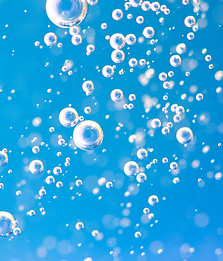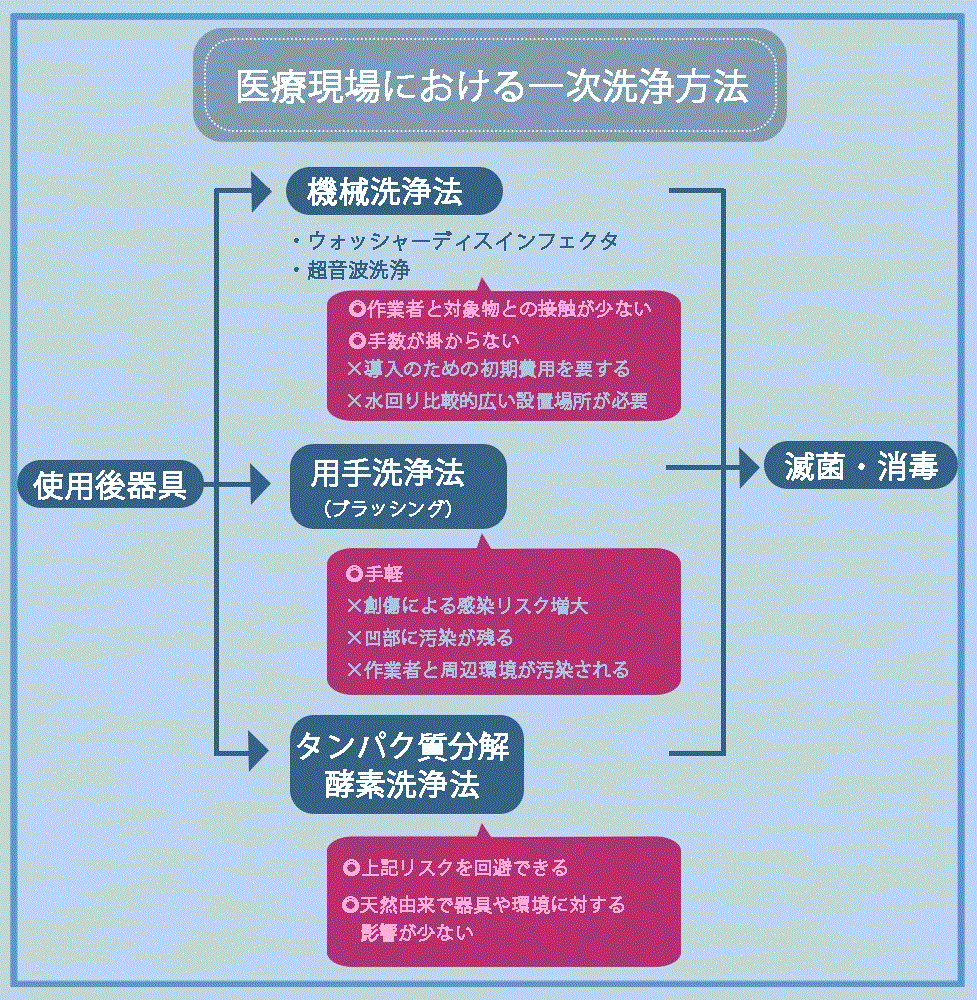
Proteins / lipids, powerful degrading enzyme cleaners
Tecanose
TECANOSE



Safely decomposes biofilms capable of decomposing biological proteins and lipids for reliable disinfection and sterilization of reusable medical devices
Tecanose is a cleaning agent containing a special enzyme that strongly decomposes proteins and lipids. Normally, the life of an enzyme is very short, but by blending an enzyme with a long life and high decomposition performance, a cleaning agent that can be stored for a long time and used for a long time was born. A reliable cleaning agent with a proven track record in the medical field.
Since it can safely decompose biofilms in living organisms, it is expected to be the decisive measure against infectious diseases.

[Usage]
Cleaning of surgical instruments
Cleaning of hand tools
Cleaning of cutting and polishing tools
Cleaning of basic treatment equipment
Impression body cleaning
Removal of organic stains on clothing
Cleaning of protein stains in washbasins and bathtubs
Antivirus
Tecanose 90
[Undiluted solution type]
A cleaning agent formulated in a standard concentration. Please transfer the undiluted solution to the attached foam-filling bottle before use.
Please use the undiluted solution even in the case of the dipping method.
Cleaning waste liquid is decomposed by more than 99% by natural microorganisms.
[Principal component]
Protein / lipolytic enzymes and nonionic surfactants / vegetable antibacterial agents
IMPORTANCE of 1st CLEANING
Before disinfection and sterilization
Importance of cleaning ( primary cleaning)
* Primary cleaning = To effectively disinfect and sterilize reusable instruments after use, remove organic substances such as proteins derived from living organisms in advance.
About the risk of infection in the dental clinic
ABOUT THE RISK OF INFECTION IN THE DENTAL CLINIC
The ratio of invasive treatment is high, and there are many opportunities for contact with blood and saliva.
Since most of them are outpatients, it is difficult to pre-examine infectious diseases.
It is difficult to take systematic infection control measures like in general hospitals.
Dentistry is said to have a high risk of infection, because in addition to "most of the examinees are outpatients who have difficulty in pre-examination for infectious diseases", "there are many open blood procedures". It is in.


Blood-derived pathogenic microorganisms such as HBV and HCV may be mixed in the reused equipment after use. If such proteins are attached to the object, the following events will prevent disinfection and sterilization.
The number of microorganisms (initial number of bacteria) attached to the reused equipment after use is large.
The protein layer inhibits disinfection and sterilization.
Proteins diminish the effectiveness of chlorine-based disinfectants and electrolyzed water, making disinfection incomplete.
High-level disinfection, such as glutaral preparations, denatures proteins and makes disinfection incomplete.
By high-pressure steam sterility, proteins adhere (burn stains) to the surface of metal reusable instruments, etc., making sterility incomplete.
Therefore, the quality of primary cleaning is the key to controlling infectious diseases for reusable equipment .
Primary cleaning method
In a dental clinic, the staff in the backyard of the clinical site is generally responsible for a series of tasks such as "primary cleaning", "disinfection / sterilization", and "storage".

Mechanism of action of enzyme-based detergents
Biological high molecular weight proteins attached to instruments after use are "hydrophobic".
It makes it difficult to remove protein from the instrument after use.

Proteolytic enzymes cut the chained arms of high molecular weight proteins and break them down into hydrophilic low molecular weight proteins, enabling removal by gentle running water that does not cause water splashing.
■ Effect of enzyme-based cleaning agent
The risk of infection is reduced because workers are less likely to touch the object to be disinfected.
The certainty of disinfection and sterilization is improved.
It is possible to switch to disinfectants that have less load on the human body.
Even with the same disinfectant, the disinfection action time can be shortened.
There is no adhesion of organic substances as impurities after disinfection and sterilization.
Harmful effects such as the blades not being cut and the scissors becoming difficult to move are reduced.
STEP1
STEP2
STEP3
STEP4
Difficulties of enzyme-based cleaning agents and how to solve them
Currently, the general usage of proteolytic enzyme-based cleaning agents distributed in the medical and dental fields is the "immersion method".
However, it is thought that microbial contamination is concentrated by repeated use in the enzyme tank, which has no bactericidal action.
The ideal way to solve this problem is to replace the preparation solution for each wash, but it is unrealistic in terms of cost and is not preferable in terms of environmental load.
Therefore , the most suitable method is the foam-filled cleaning method .
■ Cleaning of appliances by foam cleaning method
Put the used equipment in the basket and wrap the equipment with the foam of "Tecanose 90".
After the bubbles disappear, wash with water and sterilize as usual.
■ Cleaning of dedicated storage case by foam-filled cleaning method
Put a special storage case after use in a basket or sink, wrap it in foam of Tecanose 90, wash it with water after the foam disappears, and sterilize it as usual.
STEP1
STEP2
STEP3
STEP4
■ Cleaning the impression body by the foam-filled cleaning method
It is difficult to remove organic matter from the impression body by washing with water, and water splashes by washing with running water may spread pollution to the surrounding environment. If blood adheres significantly, remove it with a weak shower.
The impression body is washed by the foam-filled washing method, and after washing with water, a disinfectant for the impression body is used.
STEP1
STEP2
STEP3
STEP4
Application of foam-filled cleaning method to partial contamination of uniforms
If the adhesion of blood etc. is visible, perform embedding cleaning. After the foam disappears, put on gloves and wash your hands partially.

■ Ultrasonic cleaning combined method
Fill the cleaning liquid tank of the ultrasonic cleaner with the undiluted solution "Tekanose 90".
Please wash the object after use with water in advance.
Immerse the object and drive the washer.
After 5 to 10 minutes, remove the utensils and wash with water.
Put it in a sterility pack and sterilize it.

■ Immersion cleaning method
-
Fill the cleaning liquid tank of the ultrasonic cleaner with the undiluted solution "Tecanose 90".
-
Please wash the object after use with water in advance.
-
Immerse the object.
-
After about 10 minutes, remove the basket and wash the utensils with water.
-
Disinfect or sterilize with chemicals.
inspection
■ Competitive comparison experiment with other companies
Decomposition experiment of protein (gelatin [denatured protein] film)

